To stay organized, we need to have things in front of us where we can see them. We need to be able to write them down, remind ourselves of them, and know what is coming up that might affect them. In this section I will cover several things you can do to get organized: to-do lists, grocery lists, bills, calendars, planners, appointments, and thoughts and ideas.

How to get organized without all the fuss and cost, Part 2
by cherylone
In part 1 I covered how to organize your area. Now I would like to cover how to organize your schedules and appointments.
Sadly, in order to save time for relaxation, you must first invest time.
Just like money and seeds, nothing grows unless you first plant it. That means that you will have to take a little time to set things up, but then things will flow so quickly you will be amazed at how easy it works.
I will start with To-Do lists.
I keep my To-Do list in the front of my planner so that I see it when I first open the planner. You can keep yours wherever you like as long as you will see it several times during the day.
The reason I am starting with a To-Do list is because it should be the very first thing you do in the morning, preferably during breakfast and that first cup of coffee. It’s not hard; in fact it is quite easy. Just get yourself a notebook (or, to save even more money, grab a stack of paper you have lying around and staple several together). Be prepared, though, the first few will be quite time consuming and long until you get the items whittled down. More than likely messy will also be a part of your first lists.
Getting started:
On the first page you will write the date and day at the top. Now, list absolutely everything that you need to get done. Not just what has to be done today, but what has to be done period. For instance, if you will have to go shopping for school clothes, make a doctor’s appointment, call about electric charges, etc. List everything one to a line down the left-hand side of the paper. Don’t worry if the list becomes super long, it is bound to in the beginning.
Once your list is complete, go over it to be sure you haven’t missed anything, however don’t stress this part because you can always add on later.
Example #1-To-Do List
The day and date would go here
Call for oil delivery
Dentist Appointment for Gerry
Get food for party
Pay insurance premium
Take dog to vet-(date of appointment)
Check on status of prescriptions
Get oil changed
Pick up dry cleaning
Get vacuum fixed
Is the vet appointment on there? Did you note the kids have a concert coming up? Did you mark that the boss has asked for a report on coupon usage at work? (I know, silly, I’m just trying to get you to think about the unusual things that most people miss in this first step.)
Take the list you made and begin to prioritize the items.
Things that absolutely must be done today are CLEARLY marked a ‘1’. Things that can be done tomorrow if you don’t get to it today can be CLEARLY marked a ‘2’, and so on until you have gone through the entire list. Now go over it again and make sure everything was number marked correctly. The first few times you do this, your list will be super long and probably quite messy, but as you complete tasks and add new ones, you will notice that the list gets much smaller and will be neater until you only have a few items listed each day.
Now comes the hard part. I usually rewrite the list putting all the ‘1s’ first, the ‘2s’ second and so on until I have everything listed in order.
Example #2-To-Do List prioritized
The day and date would go here
Call for oil delivery 1
Dentist Appointment for Gerry 3
Get food for party 3
Pay insurance premium 2
Take dog to vet-(date of appointment) 4
Check on status of prescriptions 1
Get oil changed 2
Pick up dry cleaning 1
Get vacuum fixed 3
Rewrite is optional.
The next step:
Now: keep the list with you, check it often, and try to complete the ‘1’ tasks today. Cross off each one as it is completed. If, during the process you find you can complete one of the other items because you are there, etc., feel free to do so.
Tomorrow, when you sit to drink your coffee, you will rewrite the list adding items you know have to be done today, but that didn’t make the list yesterday and omitting the items that you completed. Every morning you will repeat this process. As a pattern emerges, you will find that certain things are always done on Monday, certain things on Tuesday, etc. (this might take you a couple of weeks, don’t worry, that’s okay).
Example #3-To-Do List
Call for oil delivery 1
Dentist Appointment for Gerry 3
Get food for party 3
Pay insurance premium 2
Take dog to vet-(date of appointment) 4
Check on status of prescriptions 1
Get oil changed 2
Pick up dry cleaning 1
Get vacuum fixed 3
The final step--also optional
Arrange your to-do lists by day of the week. Pre-write the items that are done that day (I do this part on a computer so that I can print out several copies of each day, but it is still optional) then add on the extras as needed. Remember, if you find out something needs to be done that day, add it to your list. Once you get that worked out (this will take a bit, be patient) you will have a much shorter list as you add things on for the needed chores on each daily list. Other items will be carried from the list the day before until it is completed and crossed off. Remember to prioritize the list so you know what absolutely needs to get done and what can wait. Toss out old lists so you don’t confuse yourself.
Grocery Lists are easy ones.
Keep a notebook or pad handy in the kitchen--hang it on a hook, put it in a sleeve taped to the wall, stick it to the fridge, whatever is handy. Use string or rubber bands to attach a pen or pencil. Now, every time you realize that you are low or out of something, write it on the list. Get the rest of the family in this habit as well. You might have to do a bit of fussing at first, but they'll get the hang of it. Now, when the last can of tuna gets used, you (or whoever used it) will write ‘tuna’ on the list. When you go to do your grocery shopping, remove the list and take it with you. Now you know exactly what you need and don’t have to try to ‘remember’ what you ran out of 2 days ago.
Grocery List
Remember to date it when you start and throw it away when you finish.
milk
tuna
lunch meat
lunch snacks
TP
cat food
Also, take a quick look around before you leave and add anything that may have been missed like bread, plastic bags, or clothes detergent.
Bills
I hear the moaning and groaning right now! I know, no one likes to do the bills.
But they have to be done and I have set up an easy to follow plan to help you get over the hurdle quickly and relatively pain free.
First, gather together all of your bills from last month, they should be filed in their appropriate folder--not the filing type, you can use a shoe box or something similar to put your bills in once they are paid so you can at least get to them. If you have a lot of bills to pay, use a larger box. Try to always keep your bills once they are paid because you may have to refer to them in the future if there is ever a question about something. (HINT: when they are filed in separate folders, they are easier to find so try to file them--if you haven’t until now, now is a good time to start. All it takes are some file folders-manila ones are fine-and a file box or drawer to hold them.) At the end of the year, put all the paid bills together in one file and mark the year-keep for 10 years; then shred.
Buy one now.
You've gathered the bills for all of last month;
Now what?
Now, add all of the bills together to find out how much you spent on bills for the entire month. Now add what you spent for gas, lunches, groceries, coffees, etc to the amount. This is the total amount of money you paid out last month. (Check it twice to be sure you didn’t forget anything.) Now divide this amount by 4-this is what you need to take out of your check each week to have money to pay your bills. Put this money aside even if you DO NOT use it this week because you will need it before the month is over.
Add the bills and necessities together to find out how much you spent all month.
Electric 200
Rent 750
Gas 150
Phone 150
Food 350
Car payment 400
Total = 2000 divided by 4 = 500 weekly
Okay, now I have the money calculated and the first week is done;
Now what?
Now, as bills come in, mark the envelope with the date the item is due. Pay it if you can, or put it in a designated spot until you can (I use a holder-pictured here-for mine, but you can do whatever works best for you.) The sooner you pay the bill, the happier the companies will be. DON’T wait until the due date arrives to pay the bill. Try with all your might to pay it as soon as the money is put aside. There are 2 reasons for this: because you don’t want late fees tacked on, and you don’t want to spend the money you put aside for the bills. Once you pay a bill, write on the bill itself the date, amount paid and how (online, check (#), or cash). Attach any copies of receipts etc to the bill before filing. Although you can't see it here, you might want to put the date paid as well.
Why not buy one now?
 | Design Ideas Brocade Letter Holder, Black Design Ideas Brocade Letter Holder Black Design Ideas / Only $39.99 |
 | Wooden Letter Rack 4057 Features: -Letter rack.-Designed to hold papers in three separate compartments.-Three convenient hooks for keys. Construction: -Hardwood construction. Dimensions: -Overall ... Fox Run Craftsmen / Only $63.78 |
Calendars, planners, and appointments
These items go hand in hand with any organized set up.
There are several ways you can do this, however each has its pros and cons.
First, the desk blotter calendar, which is large and easy to see. It will easily remind you of appointments, schedules, deadlines, etc. However it can’t be carried with you for those unexpected times when you need to make an appointment or schedule something. They do often have an area for a To-Do list, but again, you won’t have it with you to remind you what needs to be done. If you chose not to use a planner but one of these instead, you should keep all appointment cards and write them down on the calendar blotter on your desk immediately so that if something unexpected comes up you will know what you already have going on. The other option is to use one of these WITH a planner. You make appointments in your planner and then write them on the blotter so you see them each time you look at your desk.
Next, the notebook style planner, which comes in different sizes. The larger of these are difficult to carry in your purse, briefcase, or alone, but they are easier to see and work with. The smaller sizes aren’t always large enough to carry everything you need in them, and are sometimes difficult to see, but they are easier to carry around.
Just like these below.
 | Brownline 2012 Monthly Desk Pad, 21.75 x 17-Inches (C1731) Desk Pad/Wall Calendar, Chipboard, 21-3/4 X 17 REDIFORM OFFICE PRODUCTS |
 | AT-A-GLANCE Visual Organizer Recycled Flowers Desk Pad, 22 x 17 Inches, 2012 (5035-12) Plan your month amidst bright and beautiful paper flowers. This colorful desk pad not only looks great on your desk but makes planning a breeze! Mead (Dated Office Supplies) Only $36.13 |
 | House of Doolittle Compact Desk Pad Calendar 12 Months January 2012 to December 2012, 18.5 x 13 I... House of Doolittle Compact Desk Pad Calendar 12 months January 2012 to December 2012 with notes section printed in deep blue and gray soy inks on 100% recycled paper containing ... House of Doolittle Only $13.85 |
Staples has a nice selction of planners for every need.
Follow the link below for further information.
You have to decide what your needs are and base your choice around that need. I personally like the medium sized planner that clips or zips closed. You can put a lot into these things and you can see the month at a glance-you have to write small, but you can make it work. And you can use it for personal and professional schedules together which makes it easier to keep up with things in your life.
With a planner, your To-Do list would be the first page. Open it to the first page to see what needs to be done today. Open the calendar to see what appointments and such you have going on so you can work your To-Do list around them. (Some of the larger planners actually have a place on the calendars for your To-Do list.) Cross things off as you complete them. Rewrite the To-Do list each day adding on as needed. (I do mine on a computer which is easier for me, however, you might want to hand write your list each day because by writing it down each day it is easier to remember what needs to be done.) With each new appointment, meeting, event, etc. write it immediately into your planner on the day it is scheduled and write any requirements on your To-Do list for completion. Refer to your calendar at least once a day, and your To-Do list several times a day. Keep your planner with you at all times. Keep an address section in your planner so that every time you get a number you can list it in there. You would be surprised how many times you need a number for something while on the road and don’t have it with you.
If it's in the planner, it's with you.
Thoughts and Ideas
Many of us often have thoughts and ideas during our busy schedule and rarely have time to jot them down. It might get an inspirational idea for a birthday gift for a friend, or it might be a number advertised for a product we have wanted to try out. Or someone might rattle off their new number and motion us to call. Where do we write these things? Hands might be one place, but the notes will wash clean when you wash your hands. A scrap of paper is handy, but can be dropped or forgotten.
What works best? I use my planner. I keep several blank sheets available in the book where I can write down these things so I won’t forget them. Then, when I have time, I can move them to their proper spot (for example-a new number would go into my address book). These places are also good for the kids to doodle when they are bored, and to jot down a quick trivia you might have found.
Now that you are all organized,
Check your calendar and To-Do list first thing in the morning, update as needed, and that way you know what the day holds at a quick glance. This process will not happen right away, and will involve a bit of work and practice, but once it’s done, you will love how organized you are. You won’t forget any appointments, you won’t forget your uncle’s birthday, and you won’t forget girls’ night out. Bills will be paid. And you will be so organized that you will have lots of time to sit, relax, and play with the kids. You can even use the planner and To-Do list to mark what you will be making (or having) for dinner each day. (You know-“it’s meatloaf tonight, I guess I’m eating out”)
Part 3 will cover,
How to use cereal boxes, shoe boxes, and file boxes to organize your papers and bills so you can find them at a glance (and you will love how much you can recycle with this!) I’ll see ya there.
For Part 1, click here.
You might also like
10 Highly Organized Habits for Personal and Professional Devel...The June 2016 issue of Real Simple magazine lists ten highly organized habits...
How to get yourself organized without all the fuss and cost, P...Using ordinary items, like shoe boxes, to create organizational and storage e...
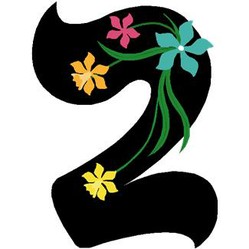

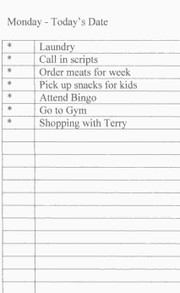
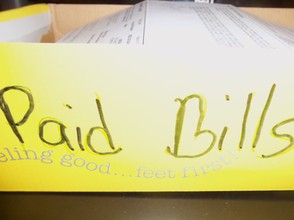
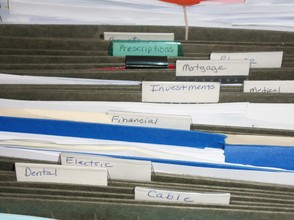



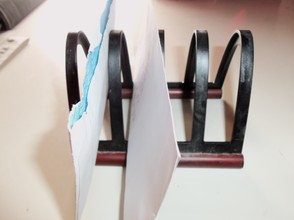
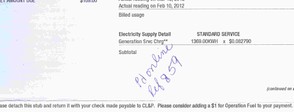
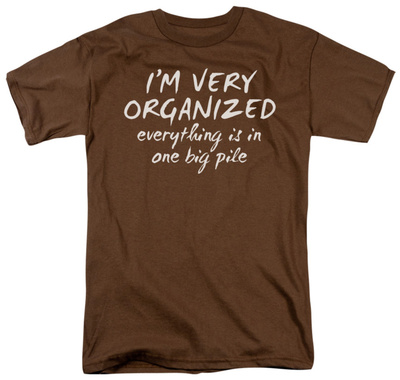
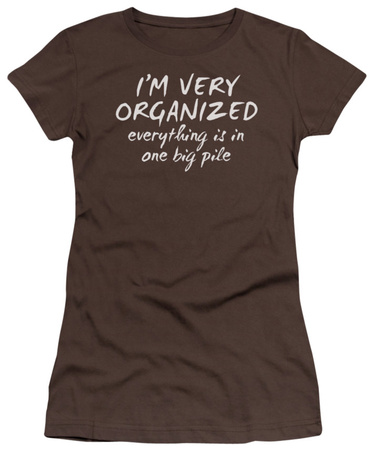








 Fruit and vegetable juice or whole fruits and vegetables, which is better for youon 04/23/2013
Fruit and vegetable juice or whole fruits and vegetables, which is better for youon 04/23/2013
 How to use memory wire to create jewelryon 12/19/2012
How to use memory wire to create jewelryon 12/19/2012
 The Spriteon 11/27/2012
The Spriteon 11/27/2012
 How to keep your feline companions safe and content during the holiday seasonon 11/10/2012
How to keep your feline companions safe and content during the holiday seasonon 11/10/2012


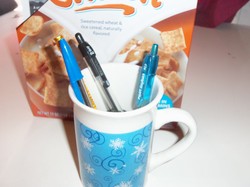
Tell me what you think.
Brenda, so do I hate dealing with paper, but I'm terrible at putting things in the computer on time, so for me paper is the way to go, at least I have a record somewhere. Glad you liked my suggestions, I hope some of them helped.
Good suggestions. I'm setting up my bills on paperless billing and automatic payments. I hate dealing with paper.
Thanks, katiem2, I hope 3 is just as helpful. I use the To-Do list way too much, making lists for the lists I have to make, you get the idea, I think I have to narrow them down a bit LOL
Ah yes part two, the to do list is a new habit for me, I'm working on it as this is helpful to reduce the intensity of the task hanging over me. Thanks for more help and guidance on how to get organized. I'm seeing much improvement in my home day in and out.